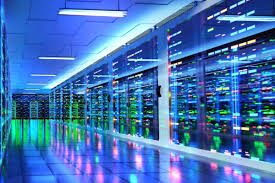Scientists have made a breakthrough that could significantly reduce the energy consumption of data centers by modifying just a few lines of code. This development has the potential to make a substantial impact on the tech industry, where energy efficiency is becoming an increasingly important issue. As the world becomes more digital and reliant on cloud computing, data centers have emerged as some of the largest consumers of electricity. Optimizing their efficiency can lead to reduced costs and a lower environmental footprint.

Data centers are responsible for processing and storing vast amounts of information, powering everything from social media platforms to e-commerce websites. However, the downside to this technological marvel is their enormous energy consumption. The servers within these facilities require constant power to operate, along with substantial cooling systems to prevent overheating. According to recent studies, data centers account for approximately one percent of global electricity demand, a figure that is expected to rise as data usage continues to grow.
The discovery made by scientists centers on optimizing the efficiency of algorithms that run on data center servers. Algorithms are sets of instructions that guide computers in performing specific tasks, from simple computations to complex data analysis. Even minor inefficiencies in these algorithms can result in significant energy waste when scaled across thousands of servers.
To test their theory, researchers conducted experiments on a range of commonly used software applications. By identifying and modifying inefficient lines of code, they were able to reduce the computational load on servers. The results were impressive: energy consumption was cut by up to 20 percent in some cases, simply by rewriting or streamlining certain parts of the code.
One of the key areas where scientists found potential for energy savings was in database management systems. These systems are the backbone of many data-driven applications, handling vast quantities of information. By optimizing query operations and data retrieval processes, researchers were able to reduce the amount of processing power required, thereby conserving energy.
Another critical focus was on machine learning models, which are becoming increasingly prevalent in industries ranging from healthcare to finance. These models often require intensive computational resources to train and deploy. By fine-tuning the underlying code and optimizing data processing pipelines, scientists managed to achieve energy savings without compromising the accuracy or performance of the models.
The implications of this discovery are far-reaching. For data center operators, the prospect of reducing energy consumption by simply updating software code is highly appealing. Not only does it offer cost savings, but it also aligns with sustainability goals as companies strive to reduce their carbon footprints. Given the high costs associated with electricity, even a modest reduction in energy use can translate into significant financial benefits over time.
Moreover, this breakthrough underscores the importance of collaboration between software developers and data center engineers. Traditionally, efforts to improve energy efficiency in data centers have focused on hardware solutions, such as more efficient cooling systems and advanced server designs. While these approaches are important, they can be costly and time-consuming to implement. The new findings highlight the untapped potential of software optimization as a complementary strategy.
To facilitate the adoption of these energy-saving techniques, researchers are working on developing automated tools that can analyze and optimize code for energy efficiency. These tools would allow developers to identify and fix inefficient code segments without requiring extensive manual effort. By integrating such tools into the software development lifecycle, companies can ensure that their applications are designed with energy efficiency in mind from the outset.
Furthermore, this development has implications for cloud service providers, who operate massive data centers to support their customers’ needs. Companies like Amazon Web Services, Microsoft Azure, and Google Cloud have already made significant investments in renewable energy to power their data centers. The ability to further reduce energy consumption through software optimization could enhance their sustainability efforts and provide a competitive edge in the market.
While the potential benefits are clear, there are challenges to overcome. One of the main obstacles is the complexity of modern software systems, which often consist of millions of lines of code. Identifying inefficiencies in such large codebases can be daunting, even for experienced developers. Additionally, optimizing code for energy efficiency requires a deep understanding of both software development and hardware architecture.
To address these challenges, researchers are advocating for increased education and awareness about energy-efficient coding practices. By incorporating these principles into computer science curricula and providing training for software developers, the industry can build a workforce that is better equipped to tackle energy efficiency challenges.
Another critical aspect is the need for standardized metrics to measure the energy efficiency of software applications. Currently, there is a lack of consensus on how to quantify the energy impact of different coding practices. Establishing clear benchmarks and best practices would provide developers with the guidance they need to create more energy-efficient software.
Governments and regulatory bodies also have a role to play in promoting energy efficiency in the tech sector. By offering incentives for companies that adopt energy-saving technologies and practices, policymakers can encourage widespread adoption of these innovations. Additionally, setting energy efficiency standards for data centers could drive the industry toward more sustainable operations.
The environmental benefits of this discovery cannot be overstated. Reducing energy consumption in data centers would help lower greenhouse gas emissions, contributing to global efforts to combat climate change. As the world grapples with the challenges of transitioning to a more sustainable future, every step toward greater energy efficiency counts.
In conclusion, the ability to cut data center energy use by changing just a few lines of code represents a game-changing opportunity for the tech industry. By optimizing software algorithms and promoting energy-efficient coding practices, companies can achieve significant cost savings and environmental benefits. As this research continues to evolve, it is likely that we will see even more innovative solutions to the energy challenges facing data centers. For now, the message is clear: sometimes, small changes can lead to big results.










Add Comment